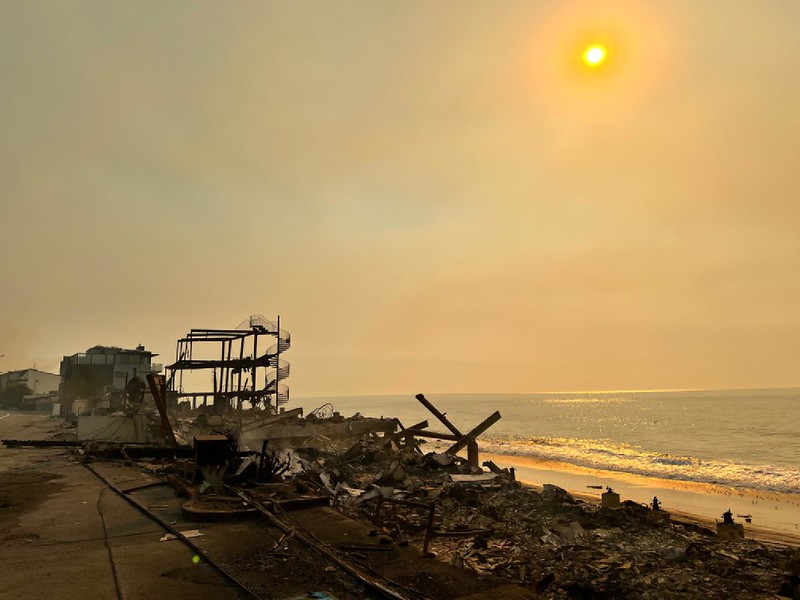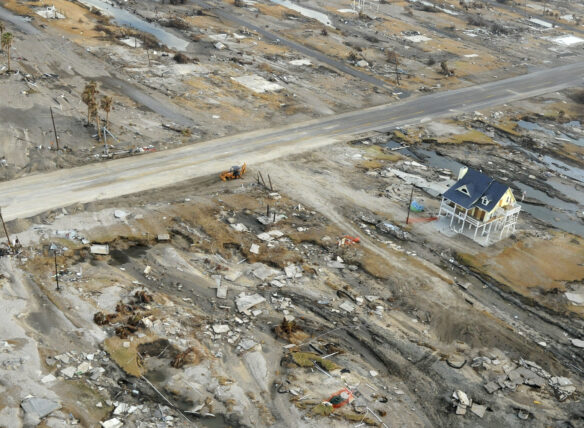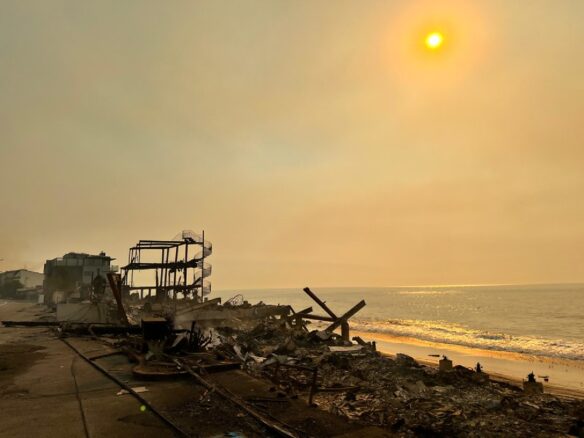Excerpt:
“I think we suffer from what I call a short disaster memory. We want to get in there and build and rebuild as fast as we can,” said Gary Griggs, a UC Santa Cruz oceanographer and coastal geologist who wrote “California Catastrophes: The Natural Disaster History of the Golden State.” But the impermanence of coastal construction ”is not something most people are interested in hearing about…”
Dean and Denise Wenner were sweet on the Cape Cod-style home from the moment they found it in 2019. It had five bedrooms spread over three levels, with decks that hung over Santa Monica Bay.
When the tide was up, you felt almost like you were on an ocean liner, with views that swept from Palos Verdes to Point Dume.
Now the Wenners are among more than 300 families along Pacific Coast Highway in Malibu who lost their homes in the January firestorms, all of them facing even greater hurdles than their inland neighbors in trying to rebuild homes that most never planned to leave.
The reason for extra anxiety along Pacific Coast Highway? The very qualities that made the houses so special — their precarious toehold on the Pacific coast — will now make them particularly challenging to rebuild.
Already burned by a fire that came from the north and east, the owners are being required to rebuild their homes to ward off ever-rising seas and fiercer storms coming from the south and west.
That will mean not just incorporating the fireproofing measures now required of homes throughout California’s fire zones but propping the homes many feet higher and constructing sturdier seawalls — measures meant to protect the homes and their septic systems from ocean encroachment that grows ever greater as the Earth’s climate warms.
Reconstruction along the Malibu coast underscores a truth repeated many times in inland communities: While the laws of nature cry out that this is inhospitable ground, the politics of tragedy and the laws of private property demand that the Renners and their neighbors have a chance to rebuild.
“Right now it would be political suicide for anyone in public office to talk about not rebuilding everything and anything, after the fires,” said one longtime observer of coastal development, who asked not to be named to avoid alienating Malibu homeowners. “This is not a time that invites the most thoughtful policy discussion.”
That means no one in political leadership — from Malibu City Hall to the governor’s mansion — has been willing to raise another alternative, favored by some academics and climate policy analysts: removing homes along the shoreline to accommodate the advancing ocean…









